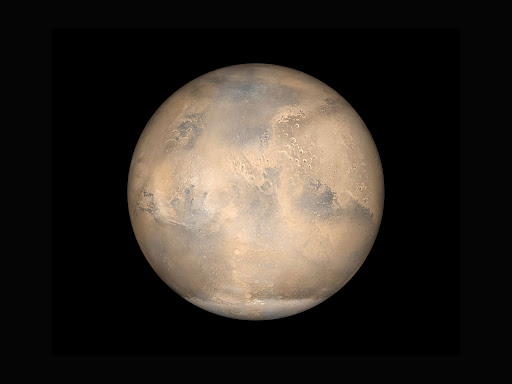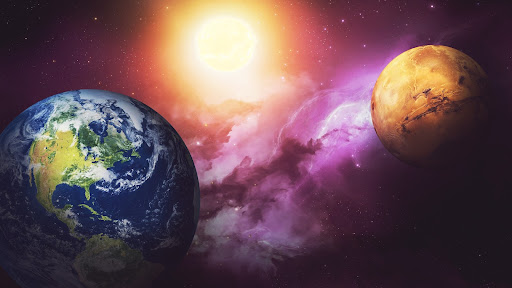
Mars is the tiny planet that is Earth’s neighbor and the fourth planet from the sun. Sometimes called the Red Planet, Mars is named for the Roman god of war. The planet’s two moons were named Phobos and Deimos after the sons of Mars and Venus. Civilizations have always contributed Mars to war and battle, even the names of the moons mean “Fear” and “Terror.” Due to having a larger orbit and slower rotation than Earth, Mars has a longer day than earth by just an hour and 37 minutes. However, one year on Mars is 687 Earth days, roughly the length of two Earth years. According to NASA, if you weigh 100lbs on Earth then you would only weigh 38 lbs on Mars. All of this is due to the Gravity of the Red planet and how Mars is formed.
What is Mars Made of?
Like Earth, Mars has an atmosphere, crust, mantle, and a core. The rocky layers are similar in composition. In fact, all of the rocks and all of the minerals that have been identified on Mars so far are also found on Earth. Mars Rovers and spectrometers on orbiting spacecraft have indicated Mars’ surface is composed of things like basalts and is high in sulfur, chlorine, and other volatile elements. Mars has soils consisting almost entirely of sulfates or silica. Many of the rocks appear to have been affected by warm volcanic fluids or weathered as a result of warm surface conditions. Minerals such as clays are common throughout Mars’ cratered terrain. According to Britannica, there are indications that surface conditions changed dramatically around 3.7 billion years ago. Prior to that time, warm and wet conditions were believed to be common and resulted in extensive rock alteration; after that time such conditions were rare, and rock alteration was minor. Mars’ atmosphere is 96% carbon dioxide, which means humans can’t breathe without support. None of these conditions have stopped humans all over the world from planning missions to Mars.

The Future of Mars Exploration
Both NASA and SpaceX have expressed their plan to put the human race on Mars sooner rather than later. Other countries are also interested in Mars and sent their own versions of rovers there. In 2020 the US Mars 2020 Rover, ExoMars rover from the European Space Agency, the United Arab Emirates Hope Orbiter, a Japanese orbiter, a Chinese rover and the SpaceX Dragon capsule were all launched to Mars. NASA says they are “planning to send humans to Mars sometime in the future. Preparations are being made, primarily through our robotic exploration in collaboration with the Human Exploration and Operations Mission Directorate (HEOMD) and the Space Technology Mission Directorate (STMD).” SpaceX’s website says they’re going to “Mars and beyond: the road to making the human race multiplanetary.” On their website SpaceX also answers the question: Why Mars? They give a number of reasons from the ability to grow plants by compressing the atmosphere to the cold temperatures not being an issue because we have the ability to warm the atmosphere. According to SpaceX, it takes 6 months to get to Mars but they believe their Starship Rocket could eventually get the human race there.
What Issues Could Humans Face on Mars?
One issue that is not easy to predict is the health of the Mars crew. Spending large amounts of time in space could have major effects on the body. The circulatory systems could be affected, and bones could demineralize. The Mars crew could also experience psychological issues during the several hundred days in a confined space. According to Britannica radiation could also be significant, particularly if solar storms occurred during the trip. How will the crew study Mars? Mars should not be contaminated before the potential for pre-existing life has been assessed. Robotic spacecraft sent to Mars have rigorous cleanliness requirements, parts that touch the surface are sterilized to minimize the possibility of interfering with the possible indigenous life. Another concern is back contamination. International protocols require that materials returned from Mars be quarantined until they have been proved to be safe. The astronauts may similarly have to be quarantined.
The idea of indigenous life on Mars and humans going to Mars has always sparked an interest for people. The human race will always be fascinated by Mars until we have the chance to see it ourselves. Do you think humans could thrive on Mars despite the conditions which aren’t exactly ideal? Do you think the human race should be on the road to possibly colonize mars? Did you know Mars had two moons? Find out about Asteroids, Stars, and Blackholes on the next installment of Five Minute Planetarium.
Written by: Erinn Malloy
